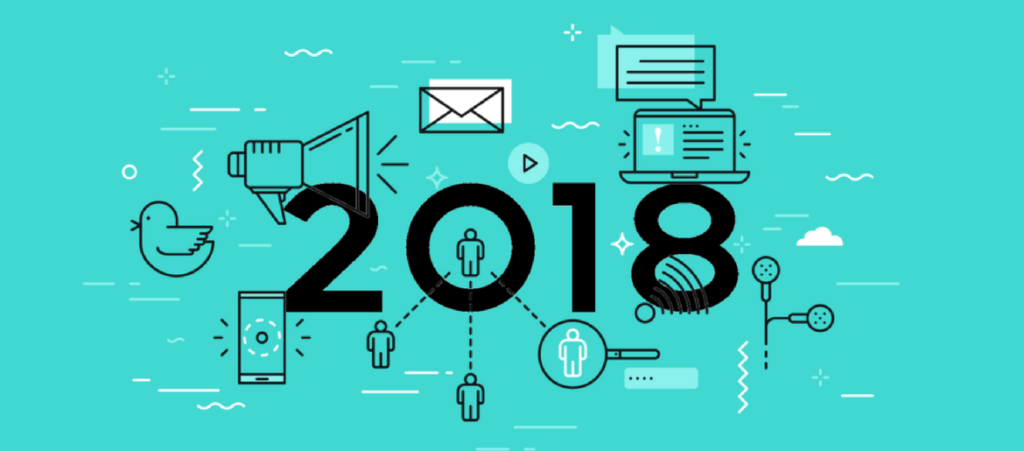This article was originally posted on forbes.com
It’s that time of the year again when all of us are summing up our activities for the year and planning ahead for the next one. Like we did in the past, I would like to present you with some very interesting mobile industry predictions made by some of the most interesting executives and rising stars of our quick-changing, high-octane industry. So here they are, and, at the end, I’ll let you in on what I think will happen this year. Enjoy!
Aurelie Guerrieri, CEO, Akila One
 What do you predict will be a positive trend in the mobile ecosystem next year?
What do you predict will be a positive trend in the mobile ecosystem next year?
“First of all, 2017 was finally the year of…. mobile programmatic! While it was growing in spurs on desktop, programmatic had faced a lot of challenges in mobile and budgets were slow to migrate from testing phase to scaling. This year, I’ve finally seen UA clients starting to leverage programmatic effectively, both for performance marketing and for brand advertising. While the monetization side is lagging behind, crippled by waterfall-driven mediation layers, I predict that in 2018 we will see new tools that will enable mobile app publishers to auction off every impression, and maximize their inventory’s value”.
What do you predict will be a negative trend/fading trend in the mobile ecosystem next year?
“It’s not your grandfather’s growth hacking anymore. The deal slinging, wild west, ‘let’s get some downloads’ days are gone. While the maturation and professionalization of the industry have some great sides (better ROI measurement!), this also means the bad actors are getting smarter (oh, the scale of fraud!). In 2017, if you’re not developing a sophisticated fraud monitoring strategy, you’re easy prey. Hopefully, many of these bad actors will be wiped out of the space next year”.
What was, in your opinion, the most important event/deal/trend in the app economy in 2017?
“2017 demonstrated that on mobile, concentration wins. We already knew the competition was fierce to be noticed among 2 million other apps in each store, and then be installed, opened, used and selected as one of the 30 or so apps users open monthly. Skyrocketing to the top of the charts with a brand new, independent app was akin to winning the lottery. It’s now been demonstrated that challengers have a very hard time keeping these painfully acquired gains on incumbents. The feature blockade from Facebook-owned Instagram seriously challenged the hotter, newer runner-up Snapchat – for whom 2018 will be a decisive year”.
Evan O’Neill, Monetization Specialist, Jana
 What do you predict will be a positive trend in the mobile ecosystem next year?
What do you predict will be a positive trend in the mobile ecosystem next year?
“I think recognition and reactions to mobile ad fraud are actually positive trends, despite how they are frequently portrayed as negative. While there are a lot of fraud concerns in the industry, it’s clear that companies are directly addressing the issue for the first time and coming up with solutions for both publishers and advertisers alike. The success of companies like Integral Ad Science and MOAT are great examples.”
What do you predict will be a negative trend/fading trend in the mobile ecosystem next year?
“The lack of standardization in the mobile ad ecosystem is a concern of mine. I believe that one of the biggest positive steps in programmatic advertising for mobile was the introduction of Open RTB Protocols, which have evolved and advanced along with the industry. I believe we need similar standardization conventions around many more facets of the industry such as creative naming conventions, fraud identification/prevention, API parameters/macros, and (more so than anything else) reporting”.
What was, in your opinion, the most important event/deal/trend in the app economy in 2017?
“Personally the increased spend in emerging markets, particularly from brand advertisers, is an extremely important trend. Performance advertisers have also grown, mostly due to recognizing the cheap cost of acquisition in emerging markets. Brands are also recognizing that many users in emerging markets aren’t as driven by intent. Our users tend to look for suggestions and directions on what kind of content they should engage with, deals they should shop for, apps they should download, etc. This makes them ripe for brand engagement. Instead of looking for a new buying mechanism or network, advertisers are realizing that, with emerging markets, the audience is the platform”.
Alex Potichnyj, Director of Marketing, Checkout 51
 What do you predict will be a positive trend in the mobile ecosystem next year?
What do you predict will be a positive trend in the mobile ecosystem next year?
“I believe that every app, publisher, or mobile content provider will be using or trying to figure out how to use Machine Learning to personalize their user experience next year.
Everything is going to become personalized. Whether it is in-app content, in-feed content, the types of ads users see, the content of ads users see, app store results, mobile search results, etc will all be personalized through the power of machine learning. This content and personalized experience will be based on real-time data and the relevance of this experience will be very powerful”.
What do you predict will be a negative trend/fading trend in the mobile ecosystem next year?
“A negative trend in the mobile ecosystem for advertisers 😉 that is, is the spike in use of ad blockers. This is something that has had a major effect on web advertising in the past few years but hasn’t yet in mobile. As you start to target more and more mobile-first users who are aware of such services like mobile ad blockers it will become harder and harder to reach unique users through paid advertising”.
What was, in your opinion, the most important event/deal/trend in the app economy in 2017?
“I believe the most important trend in 2017 within the app economy is the open discussions that have taken place around mobile ad fraud. Pre 2017 it has been something that has been kept quiet and ignored. This past year we really noticed advertisers speaking up about ad fraud, support from mobile attribution partners in helping advertisers identify ad fraud, and even networks proactively trying to combat fraud as well. There really seems to be a coalition between all partners to end this type of behavior”.
Eric Seufert, Head of Platform, N3TWORK
 What do you predict will be a positive trend in the mobile ecosystem next year?
What do you predict will be a positive trend in the mobile ecosystem next year?
“I think the growth of subscription payments as a means of driving material revenues is a pretty positive development in 2017 that will accelerate in 2018. Subscription packages are a far better fit than IAPs as a monetization mechanism for many app verticals outside of gaming, and the decision by both Apple and Google to let developers keep a greater share of post-one year subscription revenues is a win-win-win for the platforms, developers, and consumers.
We saw the stranglehold that games had on the Top Grossing chart dissipate in 2017 and I’d expect to see more big businesses get built on mobile via subscription revenues in 2018. This, in turn, should dispel the idea that mobile is over and can no longer support the creation of important consumer businesses”.
What do you predict will be a negative trend/fading trend in the mobile ecosystem next year?
“Unfortunately I’m seeing more and more ad tech vendors playing fast and loose with client data, and given how competitive some of the ad tech verticals are at the moment and how lightly policed the space is generally, I wouldn’t be surprised to see more cases of egregious misbehavior with respect to the custodianship of client data in 2018”.
What was, in your opinion, the most important event/deal/trend in the app economy in 2017?
“I think Singular’s acquisition of Apsalar will probably be looked back upon in a few years as a watershed moment for consolidation in the mobile adtech space. I also think Snap’s acquisition of Placed was pretty important and showcases how the big mobile social networks think differently about their unique value propositions to advertisers. The most significant general trend is the escalation of the content tensions between Apple and Facebook (link: https://mobiledevmemo.com/coming-war-apple-facebook/), and, more generally, the tensions between the big mobile platforms (iOS / Google Play) and the biggest content channels on mobile. Those tensions will be interesting to track over 2018”.
Continue reading…




Comments are closed.